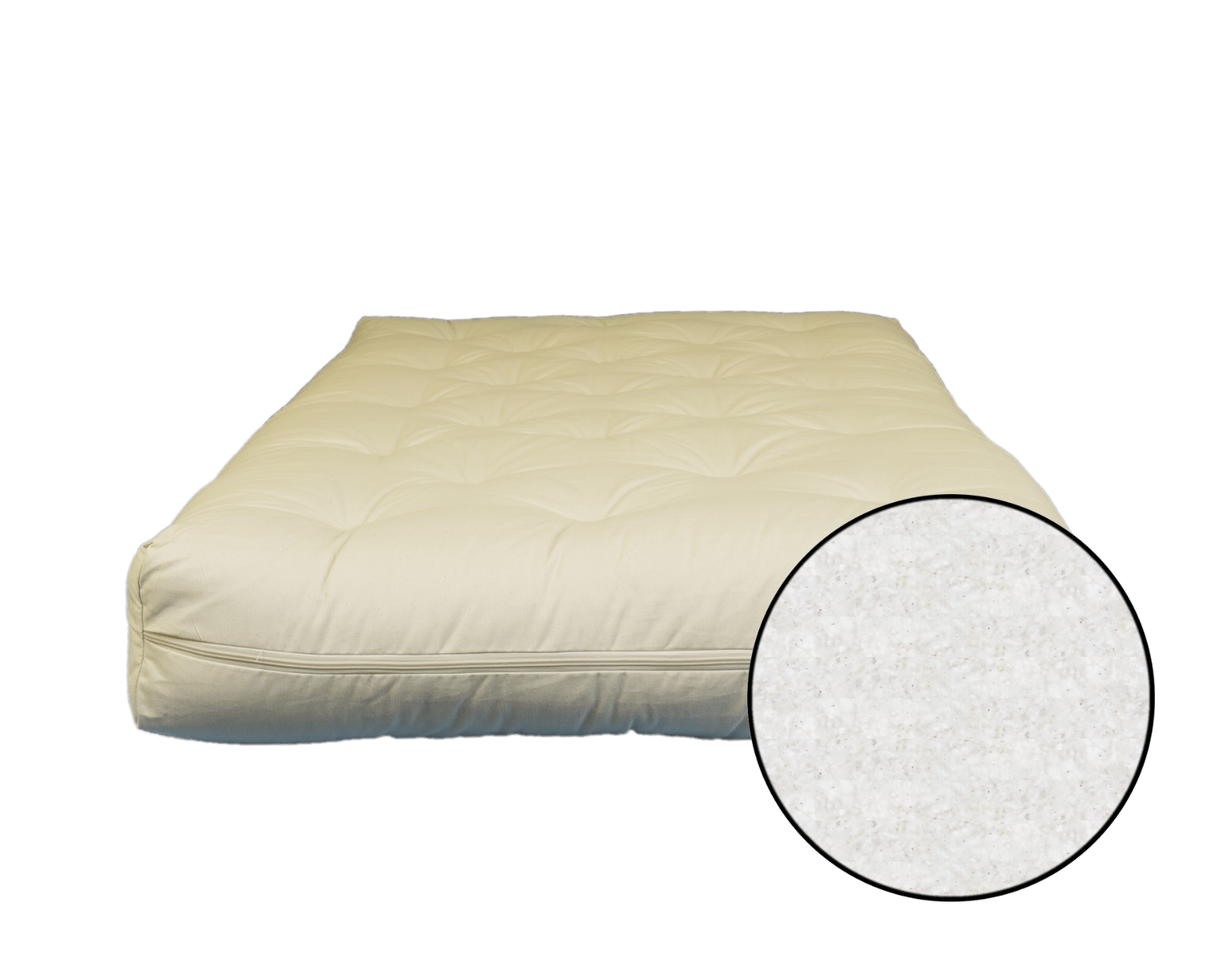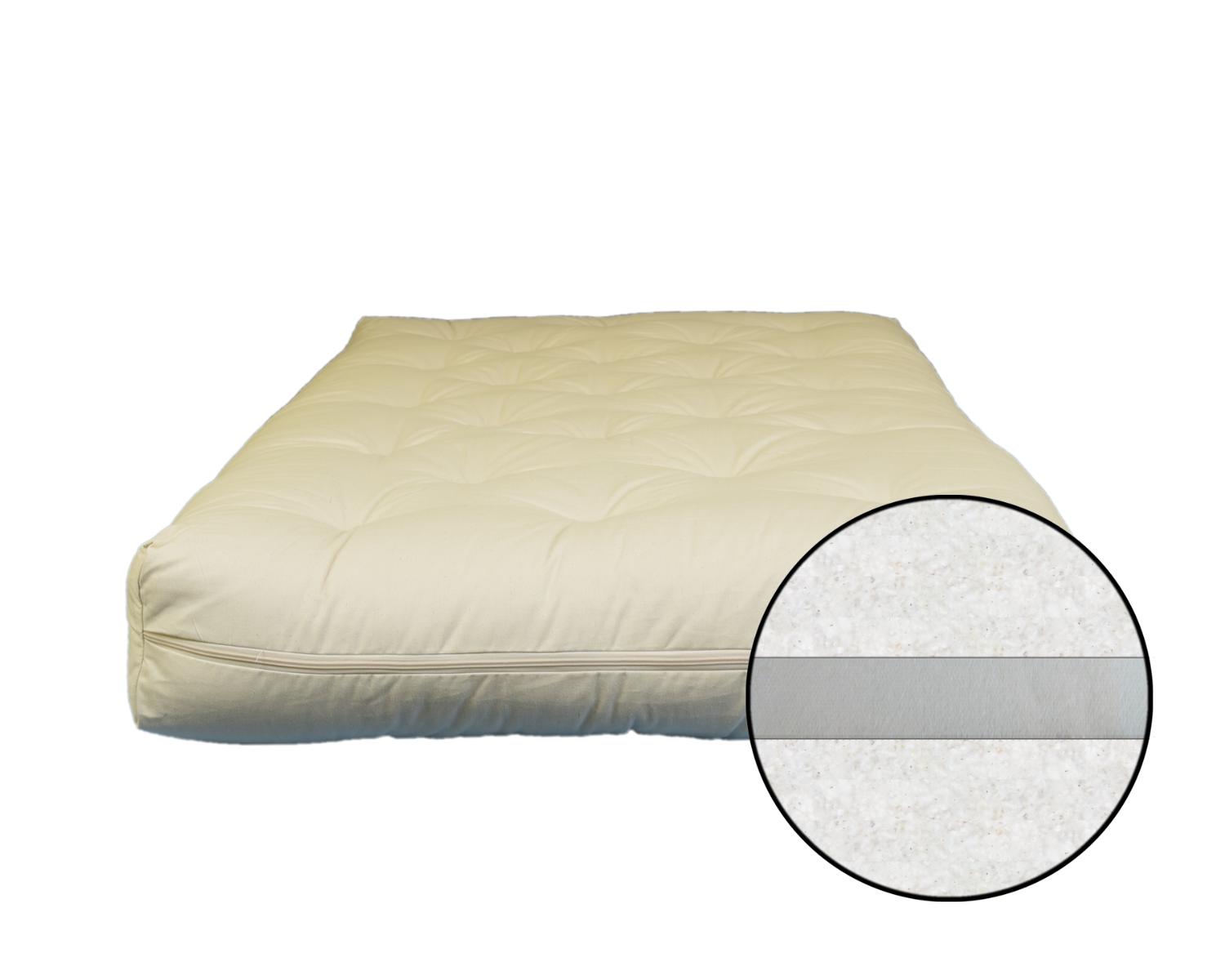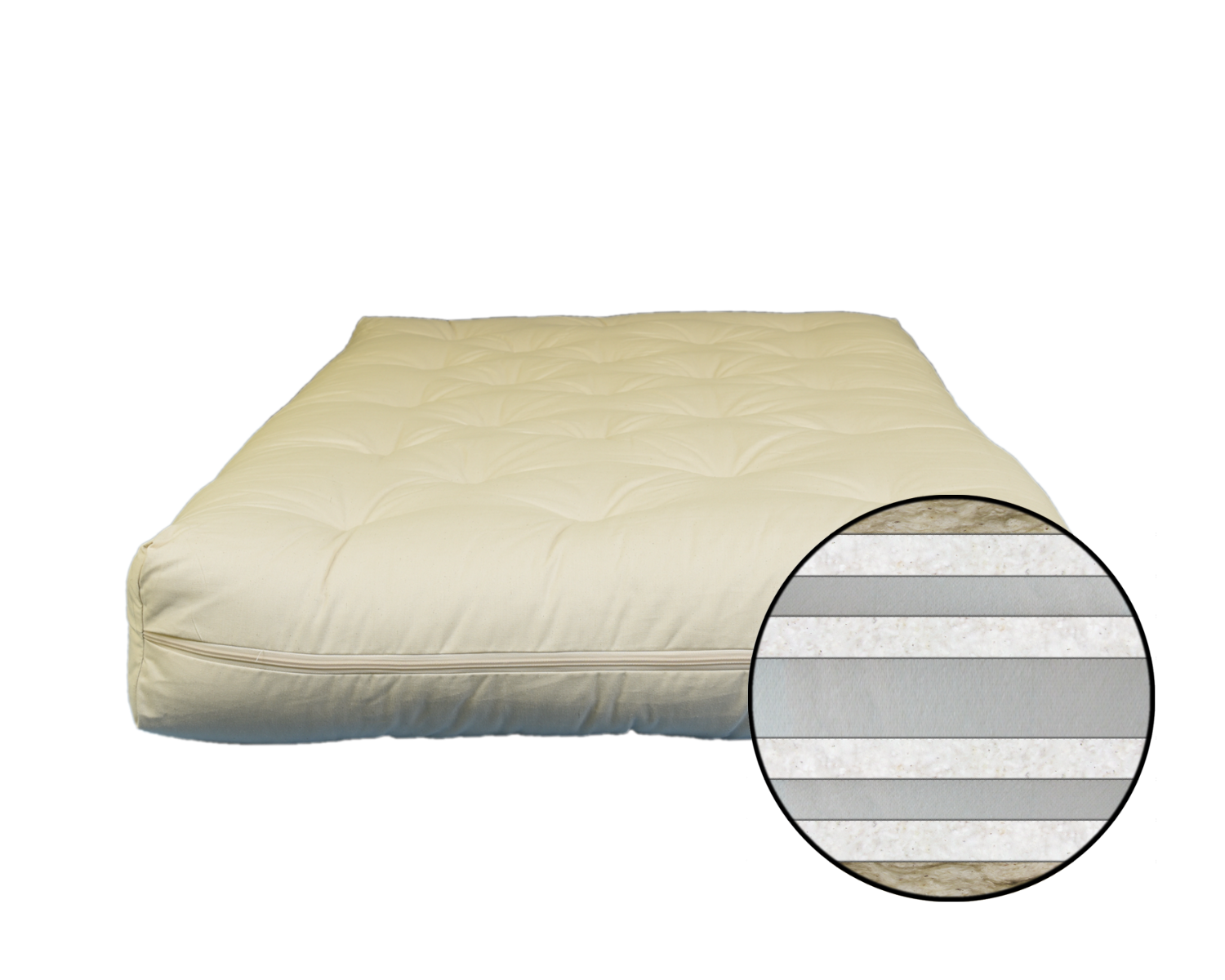Despite the growth in the popularity of futons in recent years, many people are still unsure about what a futon actually is and how it is used. The answer, in fact, is quite simple. ‘Futon’ is just the Japanese term for ‘bed’. So technically, a futon mattress is what you sleep on every night.
A traditional cotton-filled futon is typically just about three inches thick. This can make for a bed that is solid and firm, providing great support to the neck and spine of the sleeper. On the other hand, it can sometimes be a little too firm for side sleepers, causing aches and pains in the morning.
Traditionally, Americans have thought of a futon as a sofa or couch that doubles as a bed. This is one of the primary factors differentiating futons from normal beds in the mind of the common American consumer.
Another factor is the design and construction of a futon, which sets it apart from an ordinary American mattress. Made from compressed layers of organic materials such as wool, cotton, or latex, futon mattresses are more durable and resilient than ordinary mattresses. They also provide better support during the night.
The Care and Maintenance of Futon Mattresses
Organic futon mattresses offer a number of benefits. They are healthful, comfortable, and can provide great support. They are also quite durable and relatively low-maintenance. However, just buying a high-quality futon mattress, manufactured by a reputed brand, is not enough. For the best results, you must also know how to clean, dust, maintain, and care for your futon mattress.
First, buyers must understand that like a new pair of shoes, an organic futon mattress also goes through a break-in period after purchase. After a few months of usage, a typical futon mattress shrinks slightly and settles into what is known as a “working loft”. This is slightly lower than its original thickness, a change that is caused primarily due to compression. Compression occurs when the weight of a human body forces the air out from between the organic fibers, leading to a certain amount of shrinkage.
The process of compression is natural and desirable. However, if you always sleep on the same spot and in the same position, this can create hollows in the futon mattress and lead to sagging and lump formation. Hence, the user must flip and rotate the mattress from time to time, especially during the initial months of usage. Moreover, they should sleep on different spots on the mattress during different periods of time, which will help in the proper distribution of weight.
Buyers of organic futon mattresses should also invest in an appropriate frame that has a wood slat system designed to facilitate airflow. This will allow the mattress to breathe, thus preventing the growth of mold and mildew and increasing the longevity of the product.
Another important step needed for the proper care and maintenance of futon mattresses is sun drying. The cotton or latex used for filling the futon mattress were obtained from trees and vegetation nourished by the sun. Therefore, renewed exposure to fresh air and sunlight will benefit the futon mattress in a significant way.
Sun drying helps the mattress get rid of accumulated moisture, sterilizes the fibers naturally, and enhances the height of the loft. Sleeping on a futon that has been brought in warm and fresh from the sunlight can be very pleasurable as well. Sun drying the mattress once every three months should be all that is needed.
When it comes to cleaning, futon mattresses can be dry cleaned as well as washed. All you need for washing is some warm water and some laundry detergent. A sponge or absorbent piece of fabric can be used to blot out day to day spills and leaks. A mattress pad can minimize the need for frequent cleaning even further. A removable pad or cover will also help absorb the bodily oil of users, thus preventing staining and discoloration of the futon mattress.
If you want to deodorize your futon mattress, then all that you need is some baking soda and a vacuum cleaner. Wait a few hours for absorption to take place after you have sprinkled baking soda on the surface of the mattress. After that, you’re free to vacuum it off or use a steam cleaner for deeper and more comprehensive cleaning. Maintaining a futon mattress is neither hard nor expensive, if you know how to do it right.
In Conclusion
Cleaning and maintaining a futon mattress is very important for longevity and comfort. However, for the best results, you must make sure that the product you are buying was manufactured by a reputed company or trusted brand, and is hence made from the highest quality organic raw materials.
For instance, when purchasing a futon mattress manufactured by a Greenguard Gold certified brand like Bio Sleep Concept, you can be sure that the product you will get has been handcrafted from the highest quality organic raw materials, without the use of any chemicals, pesticides, or flame retardants.








